Preparing for the Hell of the North (Carolina)
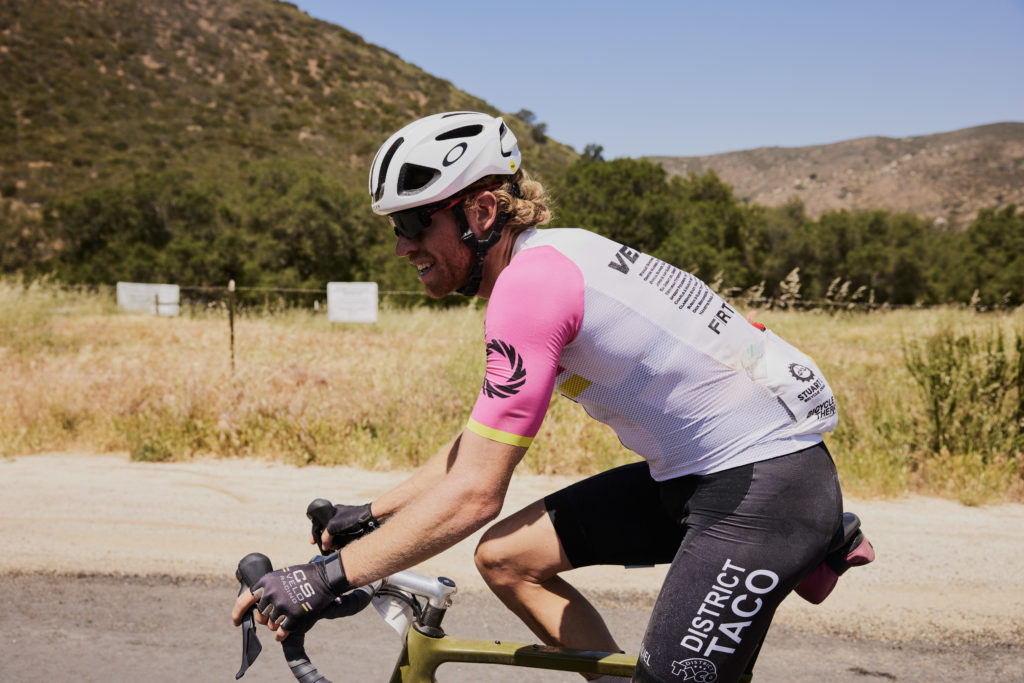
It’s been about one month since Belgian Waffle Ride (BWR) California and now North Carolina is right around the corner. I thought I would have a solid window to prepare for what’s to come at the next BWR but honestly, I’ve been on a crit racing calendar, so the preparation is, well, being handled differently. In San Diego I had the home court advantage. I was able to punch above my weight due to the local course knowledge and the ability to pre- ride the course in its entirety multiple times was a huge advantage coming into BWR California. North Carolina will be a little different. It’ll most likely be a tad bit smaller in field size, the terrain will be totally different to what I normally ride and I haven’t seen an inch of the course.
BWR California taught me a lot. It taught me what to expect when it comes to kilojoules burned, riding time, average power and heart rate. I learned what my zone distribution looks like after a 7+ hour gravel race. I also learned that a steady power output wasn’t necessarily the best for landing into the lead group, but steady pacing at key moments paid off as a valid strategy as most of the racers around me started to crack. I’ve been able to use the data from the Waffle ride to put together an image one might expect to see at the next BWR as well. For the forerunners of BWR CA, there was a very parabolic pacing strategy where the pacing was ballistic from the start and the pace didn’t let up until the lead group was whittled down to about 12 riders. From there, the pace dropped momentarily only to pick back up full stick coming down the home stretch. I’ll be ready for this to be the case in Asheville, North Carolina and I’ve used this knowledge to even apply it to the way I have been training in the run-in to BWR NC.
I race for a road squad called CS Velo. We spend the season chasing both the road race and crit calendar. It’s quite the hectic schedule but it provides a big opportunity to race the best races in the country. I’ve recently been on the road traveling to some of the crits on the American Crit Cup circuit. It’s fun to think of how to prepare for a race like BWR while competing in criterium racing. The two races are practically on the opposite sides of the spectrum. I decided I would get the bulk of my intensity through racing and when I wasn’t racing or traveling, I was recovering or putting in long days in the saddle to keep endurance high. Keeping a high overall volume was an overarching theme for this past training block just because that is such a central component to success in these 6+ hour races. For me, the high overall volume looked something like 17-20 hours per week. This is a lot for most people, but even more is ideal to be competitive at the BWR.
It’s obvious preparation for the BWR NC has been a little less than ideal for a top placing. With the calendar timing, it has been a challenge to throw all my attention to BWR. Instructing the Source Endurance BWR Survival Camp was a game changer in terms of learning the ends and outs of the San Diego BWR course, and I think I can attribute a lot of the success I had there to proficient course knowledge. Let’s review some of the data from my race file of the BWR Waffle ride and grab some key takeaways I can bring with me into the second stop on the Quadruple Crown of Gravel.
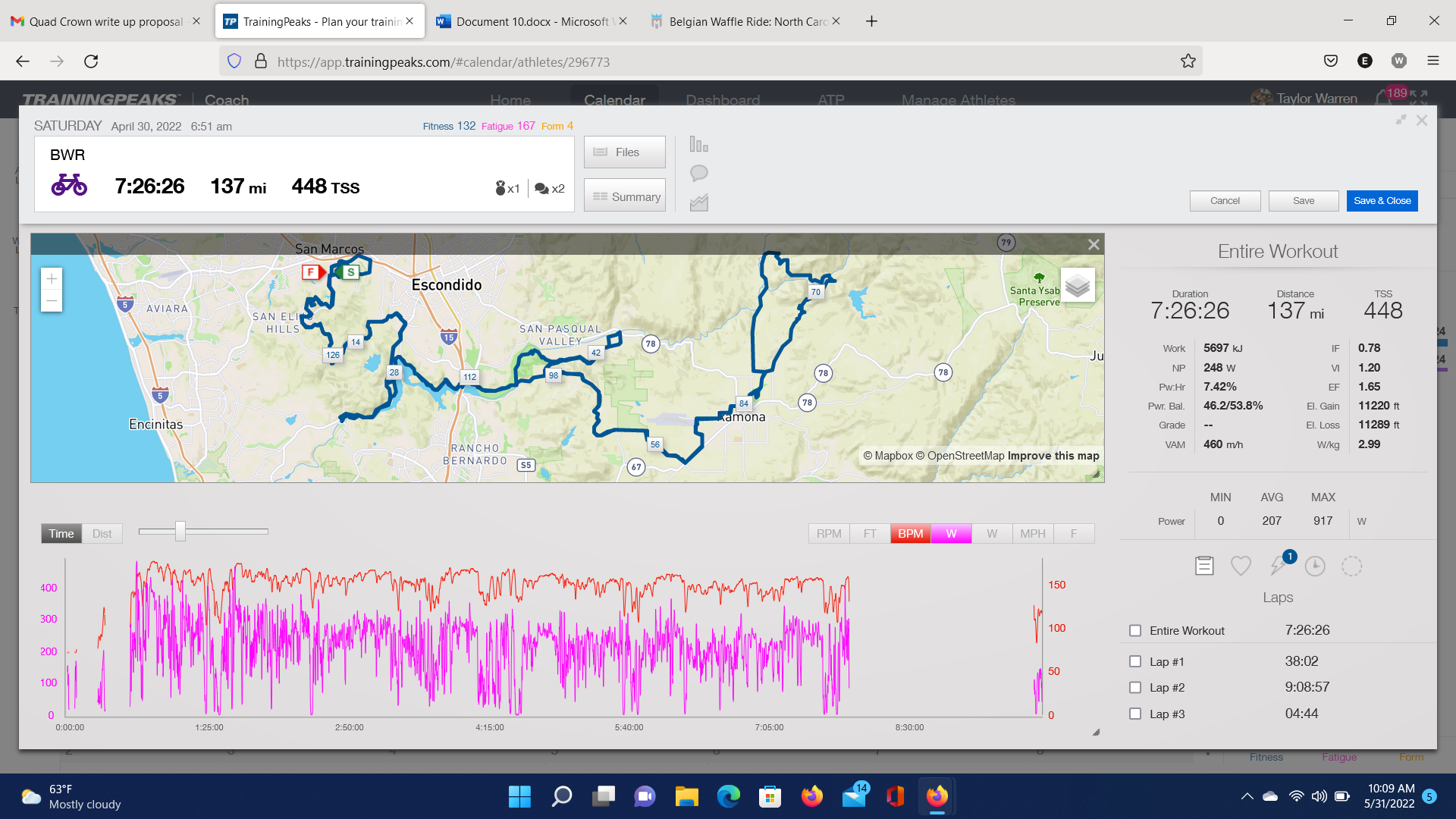
This is the full file from April 30, 2022 BWR San Diego. Total time, which included a very short warmup and cooldown, was 7:26:26. 5697 KJ were burned. This gives some insight that North Carolina will probably have a very similar energy requirement. I aimed for 100g of carbohydrates per hour during this ride and I think that was crucial for all day power and energy. 448 TSS is one of my biggest TSS days on the bike ever. Having done BWR CA is very valuable in the prep for BWR NC because it is so very hard to replicate a day like this in training.
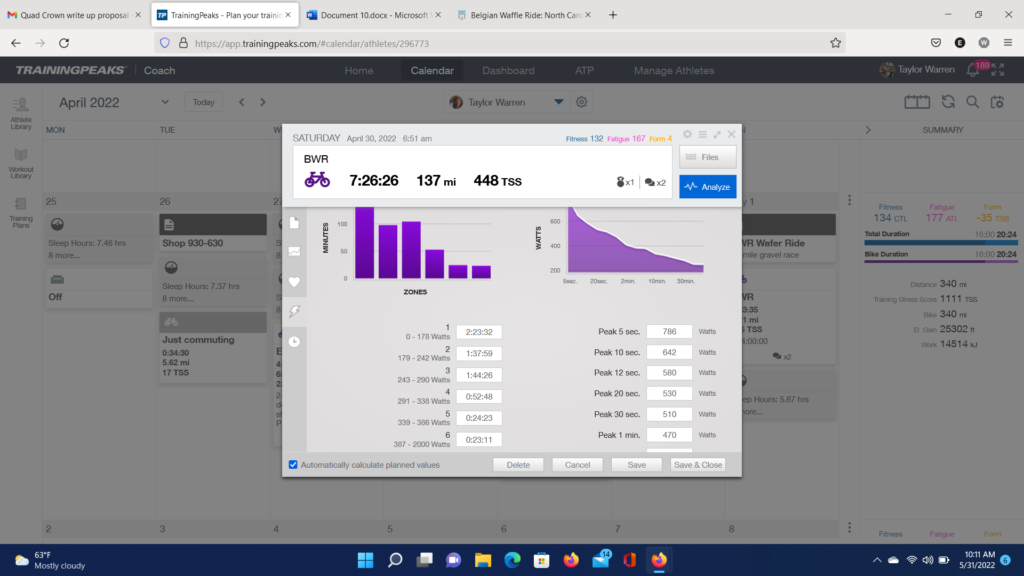
This screen grab takes a look at my zone distribution. Threshold was set around 320 for race day. Zone 1 still had the greatest distribution, can’t pedal the whole time, especially on all the off-road technical descents. Zone 3 took the second spot, which makes sense, most of BWR you are pedaling pretty hard but not that hard due to the length. At the top of the results, I’d be willing to wager the biggest difference from the top 10 to everyone else was the amount of time spent in high zone 3/sweet spot. I spent almost an hour at threshold and what really pains me to see is that I spent over 20 minutes in zone 6. 20+ min in zone 6 is often what I see in a high level 90-minute crit, not a 7-hour ride. I can use this distribution to get a good sense of what power requirements will be needed for Asheville.
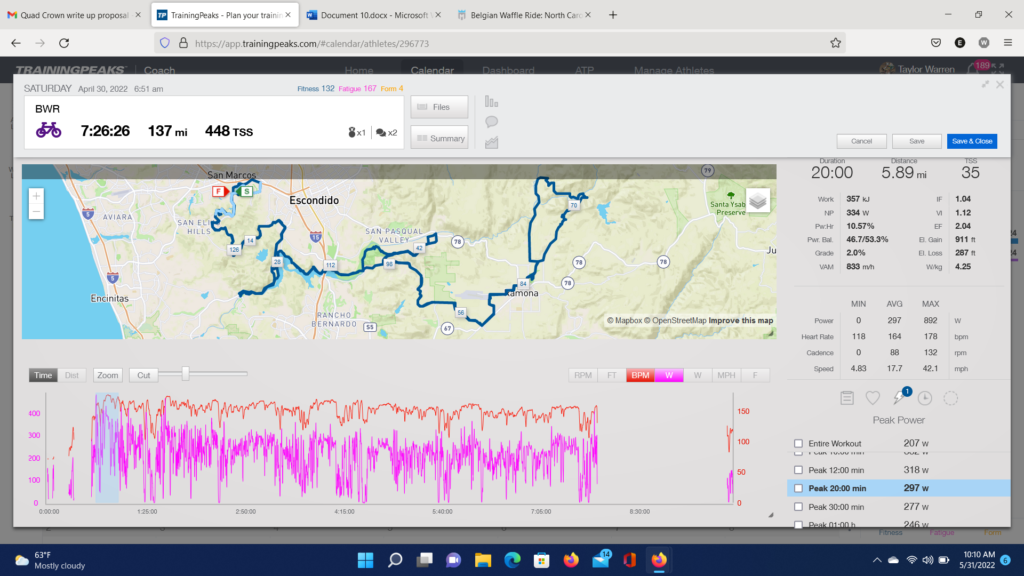
This screen grab represents some insight into the parabolic pacing strategy required for success in BWR. This was my best 20-minute power of the race, occurring in the first 20 minutes. There is a high level of dread associated with setting your best 20-minute power in the first 20 minutes of a 7-hour race, like uhhhh, guys we still have 6.5 hours to go????
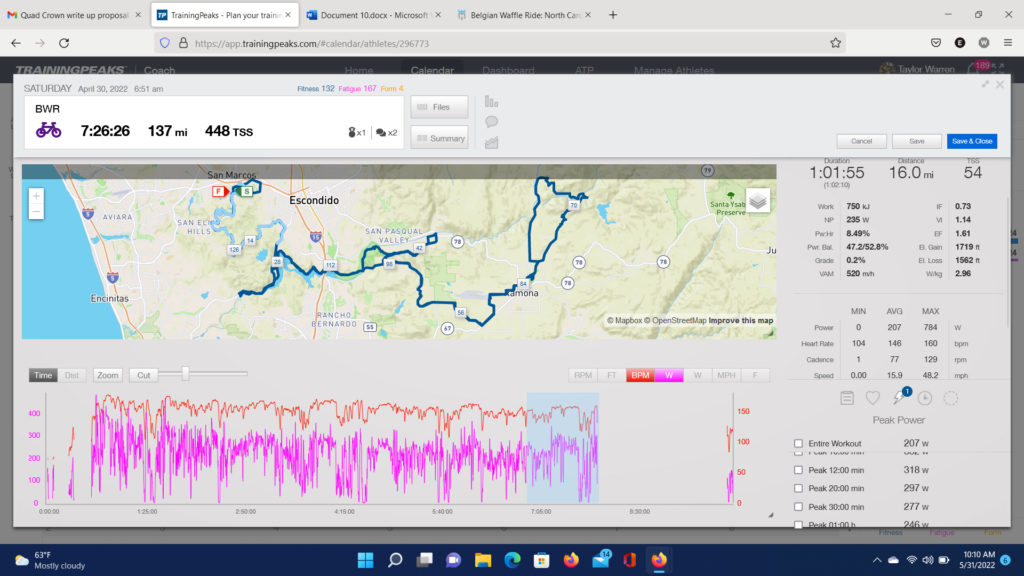
This screen grab represents my last hour of racing. The numbers were pretty dismal and unimpressive, but seeing as this happened after 6 hours of full gas racing, it makes sense. There wasn’t a whole lot of aerobic decoupling, but definitely a bit showing that I was over my endurance limit and riding on borrowed time. Improving power in the last hour of racing can make a huge difference, as most competitors will be running on fumes at this point and bleeding time on the course. Training fatigue resistance is crucial for success in ultra-gravel events. Had I been able to push sweet spot power in this last hour, perhaps I would have finished in 13th place rather than 19th.
Huge thanks to Source Endurance for providing the opportunity to tackle the Quadruple Crown and report back. This will be a fun packed year where I will become immersed in the rising discipline that is gravel racing. It’s new, it’s different and it’s exciting, something fresh in an increasingly diversified American race scene. I’m getting really excited for stop number two, BWR NC. I’m expecting another 400+ TSS day, one of the hardest and most epic courses I’ve ever taken on and lots more to learn about gravel racing! Stay posted for the BWR NC review and some great takeaways to help pass onto my SE athletes as they prepare for tackling some of the epic gravel races on the calendar.
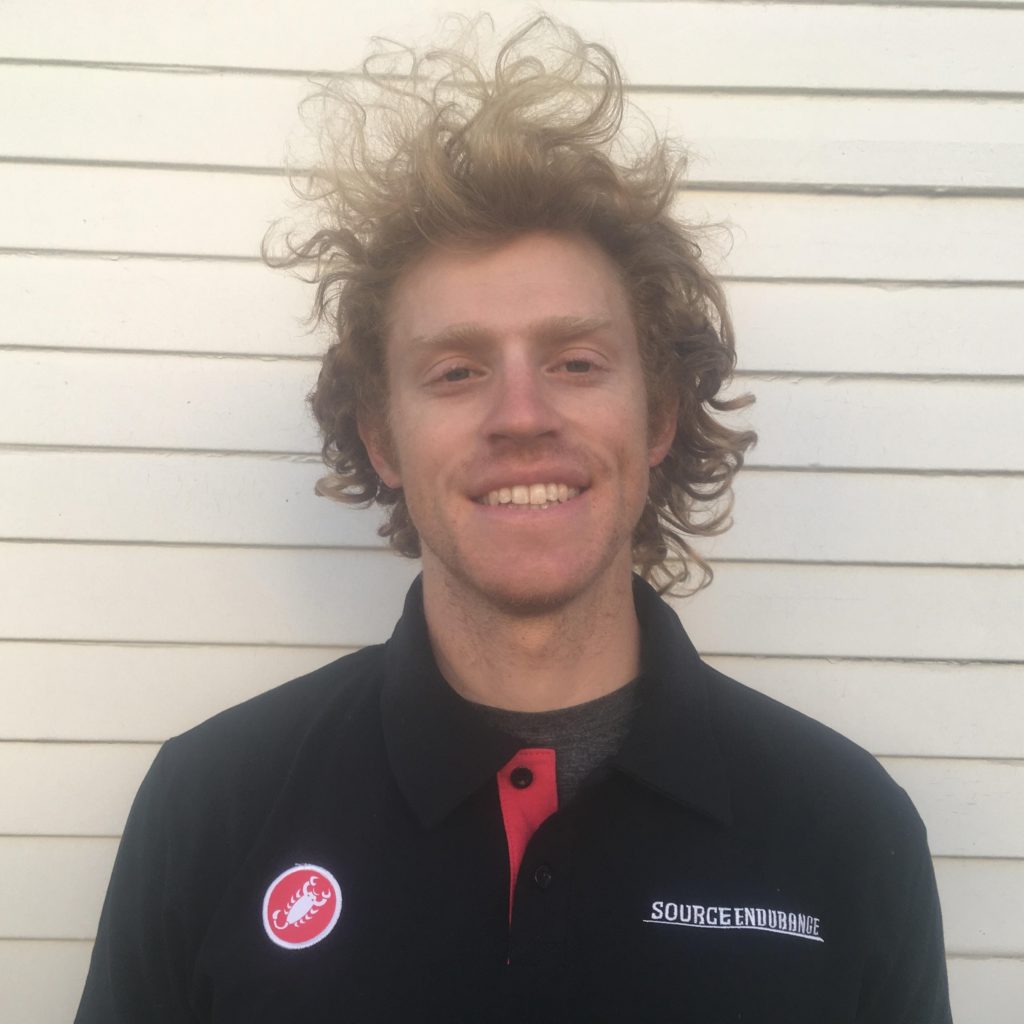
About the Author:
Taylor’s journey into the world of bikes started back in 2009 when he would join his dad once a week to cross train on the West Orange bike path in Orlando, Florida. After competing in the local time trial series, cycling quickly blossomed into a full-time passion and it was game over for all other sports: Taylor was a bike racer in the lifelong pursuit of speed, health and finding the never-ending limit of human performance.
In 2015, Taylor Warren, BSED earned his Bachelor’s Degree in Exercise Science with a focus in Sports Medicine at Colorado State University while competing in collegiate racing on the road and track, rising to the rank as Category-1 racer in both disciplines. As part of his education, he worked in labs performing physiological testing and assessments for athletes of all abilities. Taylor’s expertise in physiology transformed his passion for racing into learning how to apply the science in everyday training for the human body's optimal performance, and quickly led him to coaching others.
After graduating school, Taylor raced professionally on the road with the Colorado-based team, the 303 Project. Racing with the 303 Project provided invaluable experiences that Taylor brings to the table with the athletes he coaches. While training and racing full time, Taylor honed his coaching craft working one-on-one with athletes on the road, track, cyclocross racers and mountain bikers.
Today, Taylor calls San Diego home where he works in a bike shop performing bike fits, trains to meet the demands of the US Pro Road Tour calendar, and applies the latest sports science to the athletes he coaches including himself. At the core of his coaching, Taylor believes balancing life demands with the eustress of training, while keeping the process fun, is the key to progression and a lifelong passion for health and fitness.
